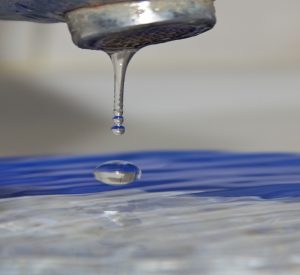The 10 Most Common Furnace Problems
An out-of-order furnace isn’t just an inconvenience for homeowners and residents. In cold winter temperatures, furnace issues can be downright dangerous, even making it impossible to safety stay in your place.
When your home’s (heater is not working), you can’t afford to delay furnace repairs or replacements, even if you’re concerned about the cost. Low temperatures in your home are not only a risk to everyone living with you, but it can increase the risk of frozen pipes and subsequent water damage, dramatically increasing your home repair needs.
To help you understand your furnace issue and needs, here’s a brief guide to common (furnace troubleshooting) issues, and what you can do to fix the problem.
1. The (furnace is not turning on).
Whether it’s due to an electrical issue—such as a blown transformer—or a motor issue that has rendered it inoperable, an out-of-order furnace should be a top concern for homeowners, especially in colder weather.
Seek out an emergency HVAC technician visit as soon as possible.
2. The (furnace turns on but has no heat).
If the (heat is not working in your house), but the furnace is running, you should first check your thermostat to make sure that it is set to heat, rather than just to circulate air. In some cases, furnace blowers may be running to move air in the home, but if the indoor temperature has not fallen below the threshold for heating on your thermostat, the problem may simply be that your furnace isn’t being told to generate heat.
In gas furnaces, a possible cause for the (heater not working) is that the pilot light is out. If you’ve checked the pilot light and it’s lit, or your furnace is electric, your next step is to contact an HVAC technician.
3. Your home’s thermostat isn’t working.
Most thermostats are powered by a wire connected to the furnace. If your thermostat stops working, it’s likely due to either a cut in the power line heading to the furnace, or an electrical issue with the furnace. This could be true even if your furnace still has power, although if your thermostat doesn’t work, you may be unable to run your furnace until the thermostat’s power is restored.
4. The (furnace is not blowing hot air).
If the furnace is blowing air but the (heater is not turning on), the problem might be that the pilot light is out, or that the thermostat is set too high. If no air is being blown, hot or cold, it’s likely a problem with your furnace blower. An HVAC technician can help diagnose the problem and either repair or replace your furnace blower, if needed.
5. Your furnace filters have become clogged.
While clogged furnace filters typically won’t stop your furnace from operating as normal, dirty filters can increase the workload required for your furnace to heat your home—and these soiled filters also become less effective at cleaning the air, which can increase the dust and debris found in your furnace, your ducts, and your indoor air.
<6. The furnace keeps turning on and off.
If you have very specific heating and cooling requirements programmed into your thermostat, and/or a thermostat located in part of the home—such as a front or back entry—that experiences rapid loss of heat, then constant cycling of your furnace could be the product of your temperature regulation needs.
If that’s not the case, though, then you’ll want an HVAC technician to visit and figure out why your (central heating is not working) properly—especially since this frequent on-and-off activity could be increasing your utility bill.
7. The furnace is making a grinding or banging noise.
Grinding or banging noises could be caused by ball bearing issues, dangerously high friction on motor moving parts, loose components getting rattled when the furnace is running, or other issues requiring service and repair. In many cases, a quick response to these noises can help you identify and address small problems before they lead to significant furnace repair costs, or even the cost of a full replacement.
8. The furnace blower won’t turn off.
If your furnace is constantly blowing air even when it isn’t generating heat—and even when the thermostat isn’t set to blowing air—the most likely cause is a broken limit switch. While this isn’t an emergency scenario, it is causing energy waste that will increase your utilities bill, and it can only be fixed by an HVAC technician.
9. Your furnace is making a high-pitched squeaking noise.
While high-pitched squeaking could be a sign of friction in the furnace motor, it could also indicate a blower belt issue. Over time, your furnace’s blower belt will fray and even snap, which will render the furnace unusable. By calling an HVAC technician when you first hear this squealing, you can get a faulty belt replaced before your furnace fully breaks down.
10. Water is leaking from the bottom of your furnace.
A leaky furnace condenser can cause water to leak through the base of the furnace, pooling on the floor. While this is a relatively uncommon furnace repair issue, it’s an easy one to diagnose—and, if the problem is simply a clogged condensate drain line, it’s a relatively easy fix.
When furnace trouble strikes, you’re always in better hands leaning on the expertise of a trusted local heating and cooling expert. Contact an HVAC technician today to restore your furnace to proper working order, and to return your inside air back to comfortable levels.
The post The 10 Most Common Furnace Problems appeared first on Stahl Plumbing, Heating & Air Conditioning.
 We know there are many factors to consider when you’re thinking about keeping your home in top shape. This is something that you probably work into your home in various different ways. We want you to make sure that you’re thinking about this in regard to your plumbing system as well.
We know there are many factors to consider when you’re thinking about keeping your home in top shape. This is something that you probably work into your home in various different ways. We want you to make sure that you’re thinking about this in regard to your plumbing system as well.
 The quality of your water affects your life. If you’re not paying attention to this, then it’s time for you to take better control of it. High-quality water means that you have a high-quality home. We’re going to make sure that you notice all the signs that your home’s water is subpar in any way. Then, we can help you figure out what water treatment system is right for you.
The quality of your water affects your life. If you’re not paying attention to this, then it’s time for you to take better control of it. High-quality water means that you have a high-quality home. We’re going to make sure that you notice all the signs that your home’s water is subpar in any way. Then, we can help you figure out what water treatment system is right for you.